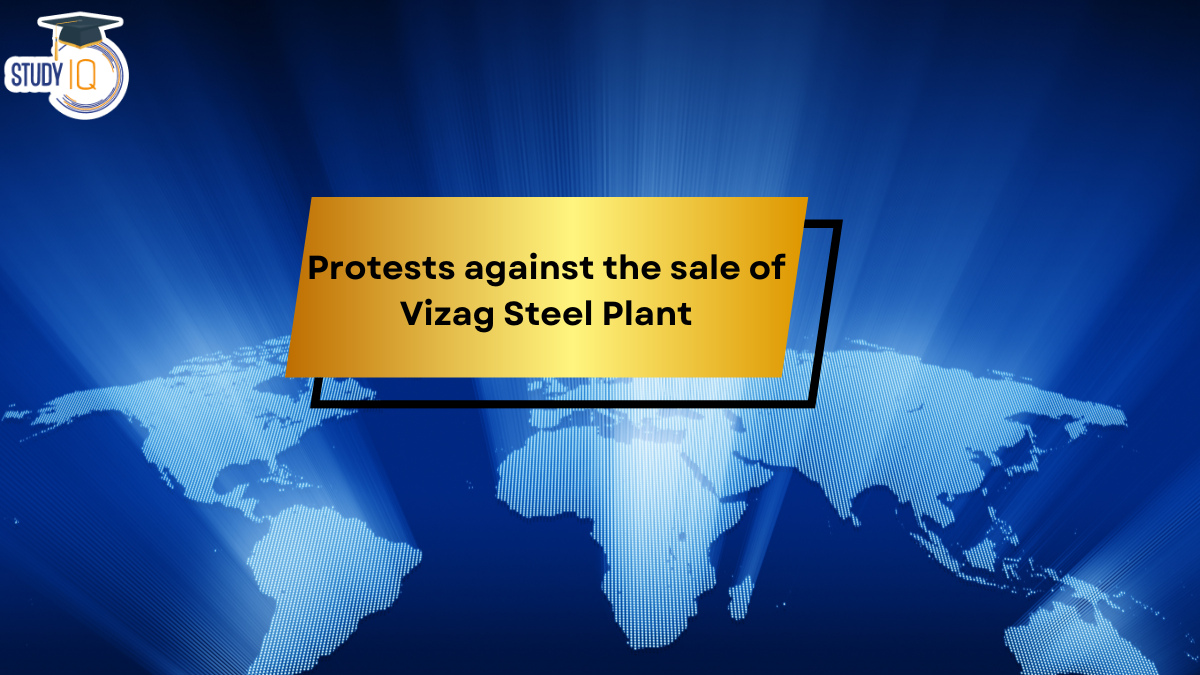Table of Contents
Reasons for potential sale of Vizag steel plant
- Lack of Captive Mines: VSP has not been allotted captive iron ore or coal mines, which would have reduced operating costs. Instead, it spends an additional ₹4,000 crore annually on purchasing iron ore, which is worsening its financial condition.
- Real Estate Potential: VSP owns 20,000 acres of land valued at around ₹1 lakh crore. Employees allege that private buyers are more interested in this land rather than the plant’s steel-making potential.
| Facts |
|
About Rashtriya Ispat Nigam Limited (RINL)
- It is the corporate entity of Visakhapatnam Steel Plant (VSP).
- It is a Navratna Company under the Ministry of Steel, Govt. of India.
- Visakhapatnam steel plant is the only shore-based steel making public sector unit (PSU) in the country
- It is one of the Leading producers of long steel products and caters to the requirements of the Construction, Infrastructure, Manufacturing & Automobile sectors.
- In January 2021, Finance Minister Nirmala Sitharaman announced the 100% strategic sale of the Rashtriya Ispat Nigam Limited (RINL).
Modes of Disinvestment
- Minority stake sale: This involves selling a minority stake in a company without transferring management control. Methods for minority stake sale include:
- Initial Public Offer (IPO)
- Offer for Sale (OFS)
- Strategic disinvestment: This involves selling a substantial or entire shareholding of a company, along with transferring management control.
- Privatisation: This is a type of strategic disinvestment where the government transfers its equity and management control to a private buyer.
Proceeds of Disinvestment
- The proceeds from disinvestment are channelled into the National Investment Fund (NIF), which was established in 2005.
- NIF is managed by Public Sector Mutual Funds and LIC Mutual Fund Asset Management Company Ltd.
- Utilisation of Funds:
- 75% of the annual income generated from the NIF is allocated for financing selected social sector schemes aimed at promoting education, health, and employment.
- The remaining 25% is used for capital investments in profitable and revivable CPSEs to support their expansion and diversification efforts.


 SAMARTH Udyog Bharat 4.0: Transforming I...
SAMARTH Udyog Bharat 4.0: Transforming I...
 BHIM 3.0 Launched by NPCI: Key Features,...
BHIM 3.0 Launched by NPCI: Key Features,...
 150th Summit of Inter-Parliamentary Unio...
150th Summit of Inter-Parliamentary Unio...





















